In the Third Millennium, we live in a globalized urban world, where loss of local culture and deep social segregation are happening. Climate is changing faster than predicted, hitting cities and people hard: climate-related floods, landslides, droughts, heat waves, traffic disruption, and food shortage are increasing. For instance, in Brazil, four years of drought affected millions of urban residents in the Southeast, where only about 7 percent of the original Atlantic Rainforest that covered the region remains. This year, the region’s frequent and extremely heavy storms are causing economic, social, and environmental impacts. Flash floods and landslides have paralyzed urban functions almost on a daily basis, besides having caused several deaths.
Transformative civic movements and ecological landscape designs are happening in many cities around the world.
The power to decide the paths of our economies emanates from extremely powerful transnational corporations, and the consequences can be felt all over the world, at all scales. The challenges are many: ecological, social, cultural, political, and economic. In my understanding, they are all interconnected. The interests of the very few rule over the vast majority, and the outcome is the New Dark Age that we are living in now. We are crossing planetary boundaries, and that’s bad news for everyone. But the poor are suffering the most.
In my view, the globalized urban landscape denotes the supremacy of large economic interests over people. It is as if Robert Moses had lost his battle to Jane Jacobs in New York, but had left a legacy of urban expansion based on costly infrastructure that led to ecosystem degradation and the segregation of people in many countries. And, on this path, the landscapes have been tremendously altered in, around, and for car-based cities, not for people.
Brasilia, the Modernist Brazilian capital that was built to drive the growth-at-all costs model, is an excellent example. It was inaugurated in 1960 with the aim of exploring the natural resources (e.g. landscapes, ecosystems, mining) located in the central and northern areas of the country (the Cerrado and Amazonia biomes). In his book Cities for People, Jan Gehl calls urban planning from the top, and from the outside “the Brasilia Syndrome”. Why? The design from the air has the form of an eagle (see photo below). The Federal and institutional public buildings are located in the center, where, from the ground “the space is too large and utterly uninviting, paths are too long, straight and uninteresting, and parked cars prevent pleasurable walking in the rest of the city.” (Gehl, 2010, p.194). The upper classes’ residential, commercial, and service zones are located in the two wings, North and South. The working class lives in the mostly unsafe, unhealthy, and neglected satellite cities that are about 50 km. away from the center, so there is a need for large roadways to transport people every day. This urban form is not good for people or for nature, but quite good for oil-based growth, the business-as-usual model. The excuse is that it creates jobs, right?
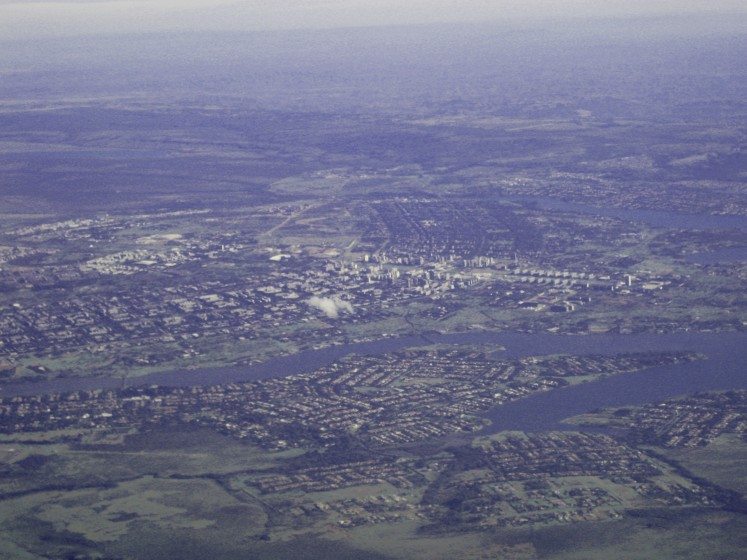
Wrong! This year, we celebrate Jane Jacobs’s 100th anniversary, and all of us should take her lessons home and do something to change our heavily built environment, introducing green infrastructure with and for people where it is gray, lifeless, and including streets and extensive lawns. Actually, we already can see this happening in movements all over the planet. People are getting together to change the world through local actions that aim to restore landscape ecological functions and enhance people’s lives: planting urban forests, growing organic food, building nature friendly spaces incorporating stormwater drainage and water collection on-site, and daylighting and restoring rivers and creeks.
Professional urban planners and landscape architects are being trained to restore landscape and ecosystems processes and functions, working together with biologists, ecologists, hydrologists, and social scientists to build a robust emergent transdisciplinary field.
The landscape has a lot do with how people value nature, and landscape is where there is a tremendous potential to make a real social and ecological revolution.
Why do we love controlled landscapes?
The landscape has been altered since humans started walking from the African savannahs to populate the continents. Domestication of seeds and animals was possible due to the warming of the planet by 2 degrees C, followed by stabilization of the climate, about 10,000 years ago. From then on, human ingenuity and voracity has changed the entire planet forever.
Through the centuries and along our path to “progress,” technologies have allowed massive changes in the thin layer (composed by Pedosphere, Biosphere, Hydrosphere, Cryosphere and Atmosphere) that covers our common home, planet Earth: converting ecosystems into human-dominated landscapes and blocking natural processes and flows has enabled tremendous economic growth. After World War II, the pace of destruction became faster, and the concentration of power also (Wright 2005). In this process, we have become detached from native ecosystems and lost our awareness of how we depend on them and their biodiversity So, it is easy to destroy what we don’t know and don’t emotionally relate to.
Cities were born in Mesopotamia more than 6,000 years ago. The plains along the rivers Tigris and Euphrates were transformed by geometrically aligned irrigation canals and square agricultural fields. Since these early periods, water and introduced plants adorned gardens of the dominant class’ properties. Throughout history, gardens (and urban form) were influenced by the orthogonal design of the ancients. Geometric French gardens are archetypal of power and wealth. Versailles is a world reference for beauty and power. Garden designs from China and Japan that mimicked nature were taken to English gardens and then, in the 1900s, to the public parks of the industrialized cities. In all cases, the urban landscape was deeply modified into look-like-nature scenery. Central Park in New York (an international reference of multifunctional public space) is one of the most prominent examples of built landscapes, and we don’t even notice (Spirn 1995). We got used to them. We learned to appreciate and value them. We take them for natural landscapes.
So, most people don’t see any problem if a remnant ecosystem or wetland starts to be filled to create land for construction. Then, the transformed landscape receives a new look: in general, with a mono-functional, aesthetic-oriented fusion of French, Arabic, and English-designed gardens to adorn the new development on an urban expansion area. Neither do they recognize anything wrong if hills are erased to open a new flyover bridge, or rivers are channelized and buried underground. It is “progress”, it is “growth”, and we need a higher GDP!
Is there a connection between big money and landscape conversion?
I have been writing for this blog since 2012 about what has been happening in the wonderful landscapes of the city of Rio de Janeiro. Since then, the city has gone through a huge transformation to prepare both for the 2014 World Cup and for the Olympic Games that will happen later this year, and it is not over yet. Public money was driven to build new roads and tunnels and to allow more and more expansion over ecosystem remnants to create land for the real estate market to explore. Gated-communities for upper and middle classes were built over some of the last ecosystem remnants (wetlands and restinga—a native dry sandy ecosystem) of the West Zone of the city. Their garden design has no connection with the local landscape, no reference to the richest biodiversity in the world. Water and vegetation play a mere ornamental function.
For the working class, it is even worse. Social housing is being built far away, not only over native ecosystems and productive landscapes with almost no green areas, but far from jobs, served by a deficient and expensive public transportation system (if it comes close to the housing complexes, usually the bus stations are far away).
Last July, I wrote a piece published in The Nature of Cities where I mentioned the disconnection between the science recommendations that had been made and the actual urban transformation taking place in Rio, with the construction of thousands of residential and commercial units in low lands vulnerable to floods and sea level rise. At that time, the real estate market was expecting to make billions off of these unsustainable developments. But, what nobody was expecting was the economic disruption. Yes, Brazil is undergoing a severe economic and political crisis.
On Sunday, March 14, millions of Brazilians marched on the streets to protest against the government and the corruption that is devastating the country and the people.
Actually the country is facing the reverse of the vision of natural resource exploiters (urban sprawl, oil, mining, deforestation, and monoculture) as the solution to indefinite economic growth. It is a very complex situation; corruption and the political schemes that intended to perpetuate the power of big corporations and political leaders are coming under scrutiny by the justice system. Several owners and high staff of powerful corporations and public companies, as well as politicians, are in jail or facing judicial charges. Corruption and improper use of public funds led to losses that scaled up to several billions of dollars. The country is paralyzed; public services are collapsing. People are suffering a great deal, especially the less privileged.
Some of the infrastructure and construction corporations that are being prosecuted in the Federal sphere are responsible for the big urban transformations in the city of Rio de Janeiro. The city is a big business, and our mayor exploits this vision with no shame. Actually, there is pride in the official posture of the administration to build the most out of the land (even if it has high ecological, social, cultural, or historical value)—no matter if they are repeating the same 20th century urbanization mistakes.
Mother Nature in cities
But, Mother Nature sends strong messages: on the evening of March 13, a strong storm hit hard in some areas of Rio de Janeiro. The City’s warning system went on to alert people about the high risk of flash floods and landslides. It happened: the waters retook their place. Lower lands formerly occupied by mangroves and water bodies were flooded, even where engineered solutions were recently built at high costs. In the upper areas, poor people suffered high losses because of the downhill overflow caused by the torrential rain, killing five people. I was stranded for hours because of the floods. Actually, storms are hitting urbanized areas daily in the states of São Paulo and Rio de Janeiro, with severe impacts.
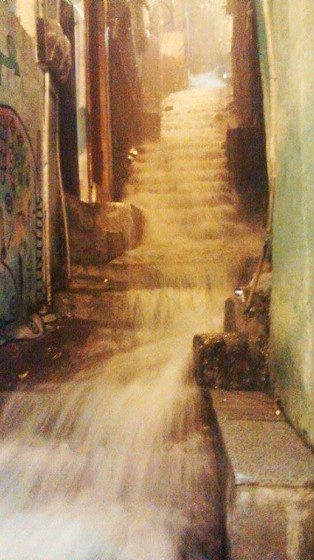
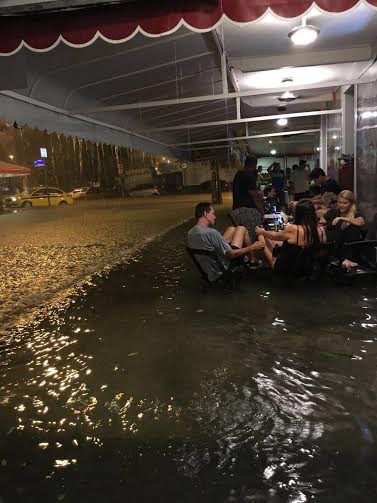
These events are not happening only here, as Haripriya Gundimeda illustrates in her article of The Nature of Cities “Is the Deluge of Urban Areas in India a Natural Phenomenon or Irresponsible Planning?” She gives a list of nature-based infrastructure to help cities adapt and to increase resilience in the face of strong climatic events, which are usually overlooked by short-sighted decision-makers and investors. I believe that the greed and corruption that permeate our consumerist society is one side of the problem. The other side is irresponsible planning backed up by people, who ignore and are disconnected from nature and natural processes.
People and Mother Nature
Times are really challenging, as Naomi Klein vehemently writes in her last book—climate change changes everything! And people are changing their environment and themselves.
On Saturday, March 12, people gathered on a piece of lawn located in a central area of São Paulo. With tools, soil, and donated seedlings, they planted the first Pocket Forest of this immense and intense metropolis under the coordination of Ricardo Cardim, a tenacious and enthusiastic botanist who loves and cultivates autochthonous Atlantic Forest vegetation under threat of extinction. People of all ages participated and transformed the small plot; at the same time, they were transforming themselves and setting new standards, instantly inspiring so many people around the country.
In recent years, small movements became viral and became big. I have written about them, because I see them as really transformational, not only at the local scale: they are touching the entire country through social media. The Internet has made us closer; it is a great tool to scale up the transformation.
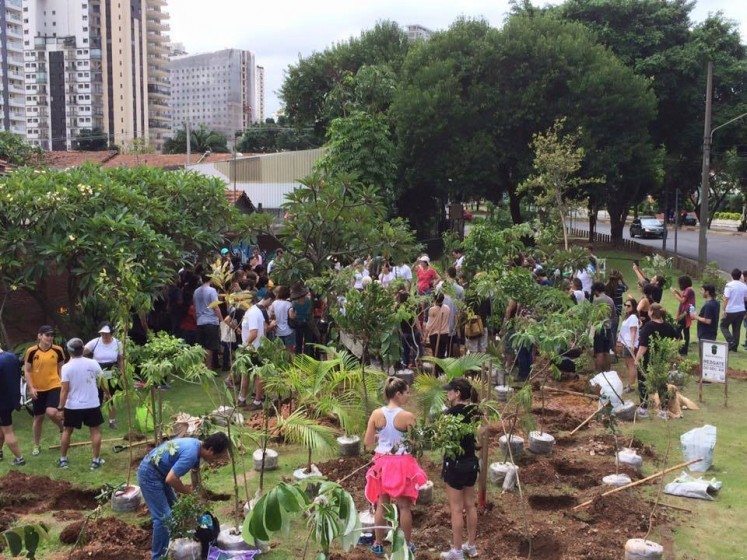
In March, there have been countless events educating people to better relate to Mother Nature and, at the same time, redoing the urban landscape in public and private spaces: rain gardens, ecological garden design, food planting, edible seeds exchange, and tree species identification, to cite some. I am deeply touched by the mobilization and involvement that has been occurring in the last years in the city where I was born. In my piece from October 2013, People Take Over Nature in Cities with their Own Hands, I wrote about transformative civic movements and ecological landscape design that are happening in many cities around the world, including São Paulo.
Also, there are committed civil servants that work harder than usual to convert dreams into reality, in spite of the political will of the moment.
The Olympic Green Corridor (see my 2012 article in TNOC) is being implemented against all odds. Silma Santa Maria, the manager of all Conservation Units of the lagoon system where most of the Olympic events will take place, is carrying out the mission to connect Protected Areas through polluted and degraded canals and lagoons’ riparian corridors. She has the support of colleagues and local residents. It is not the Olympic Green Corridor we dreamt about, but it is the first Green Corridor in Rio de Janeiro. She promoted a workshop in December to enhance public participation and give more visibility to the project.
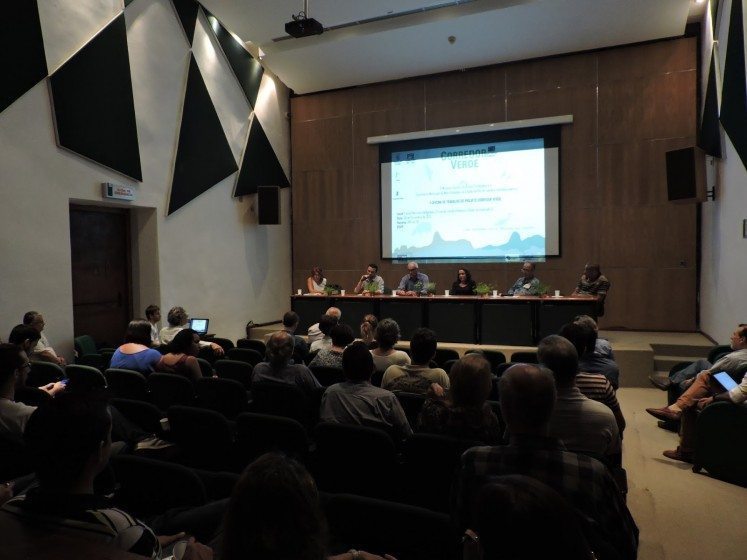
Isabela Lobato and Roberto Rocha are also militant public servants that have developed the Urban Tree Planting Director Plan, a comprehensive science and technology-based strategic plan to assess, plan, design, implement, and monitor the urban forest of Rio de Janeiro. They have been promoting participative meetings and lectures to debate and push the plan to be formalized in a legal act by the mayor. It has been a tough battle; unfortunately, up to this moment, it is still sitting in the decision-maker’s drawer. At the same time, Celso Junius, the director of urban trees management at Comlurb (yes, the public waste company in charge of the management of all street trees of the city) is assessing and mapping every tree in the streets, in a personal effort with support of residents and technical city staff.
Green jobs are inclusive. People with all backgrounds can be part of a green economy. The Mutirão Reflorestamento (Community-based Reforestation) Program has been going on for more than three decades (from 1984), generating local jobs and people’s environmental awareness in the deprived and vulnerable slopes of Rio de Janeiro. Detroit is an inspiring example. After the plunge of the automobile industry, the city has an on-going greening plan that emphasizes creating a green economy that will be sustainable, reduce consumption, prioritize ecology, and educate and raise awareness of nature.
The revolution is happening, and maybe it doesn’t have the visibility it deserves, but people all over are shifting to value nature in cities, despite the voracious appetite of “big money” for making more money. The controlled landscape is giving way to natural succession in ecological and productive gardens and park areas. Bees’ sanctuaries are been introduced in dense urban settings, as at the roof of the Opera Garnier in Paris, or in the Tijuca National Park in Rio de Janeiro. New landscape design projects, such as the prestigious High Line in New York, are reintroducing native vegetation and aim to “renature” the city. Even the abandonment of derelict areas (Gilles Clément’s “The Third Landscape”) is helping biodiversity to rebound in cities, when the public administration orients investments toward selected development areas. The paradigm of excessive landscape control that transformed our environments into deserts of biodiversity is suffering a public revenge, with people understanding the need of all species close to them so they can have better lives and well-being.
So there is hope, and it comes from the people. There is no revolution made from the top. As Klein says, we need resistance. We need people with knowledge and energy to make the leap to a new world without fossil fuels if we want our kids and grandkids to have a place to live.
This new world, in my vision, has to be green in the deep connotation of the ecological concept (see Chris Reed): has to contemplate all living organisms (biodiversity and people) and the environment—even if we build the environment.
Cities must undergo a deep transformation; the urban landscape matters a lot.
Summarizing my thoughts:
- We need healthy landscapes for everyone.
- Focus on life: more ecology and participation (science and empowerment of people). Less hard engineering and top-down decision-making (fight corruption).
- Ecological landscape design and planning must reorient all new projects, and the renewal and retrofit of the old ones, at all scales for all people.
- People must recognize a river as a river, not as an opportunity for drainage or sewage discharge, or a dead paved canal.
- Children must get out and play in natural (or not so natural, but with high biodiversity) areas in the city (including safe and green streets), not inside shopping malls.
- Streets must be alive and combine places for people, biodiversity, and waters (infiltrating and filtrating); equally importantly, they must offer places for social interaction with economic potential to create green jobs.
- Energy cannot be wasted in artificial cooling because there are not enough trees to lower the urban temperature, or because there is too much concrete on roofs that could be green.
- Green infrastructure has to replace gray infrastructure.
- Ecological education is essential to transform people that transform the environment, and the urban landscape should be a living laboratory accessible to everyone.
- Urban ecosystems must be protected and restored to make urban environments more resilient to ever-stronger climatic events bringing too much or too little water, with emphasis on the people living in vulnerable areas.
We have to learn to live with Nature. Fast! There is no other option!
Cecilia Herzog
Rio de Janeiro
References
Wright, Ronald. A Short History of Progress. House of Anansi, Toronto, 2005. http://ronaldwright.com/books/a-short-history-of-progress/
Spirn, Anne Whinston. Constructing Nature: the legacy of Frederick Law Olmstead. In: Cronon, William (ed.). Uncommon Ground: rethinking the human place. Norton, New York, 1995. Available at: http://www.annewhistonspirn.com/pdf/uncommon-ground.pdf viewed on: March, 15th, 2016


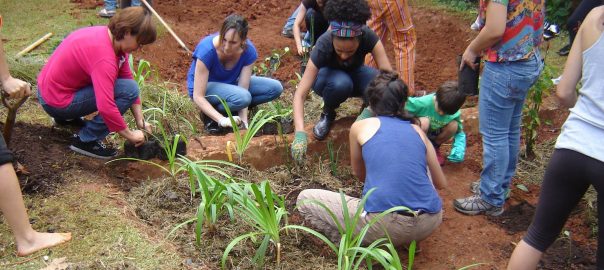
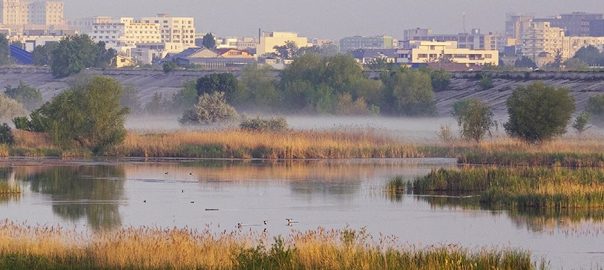
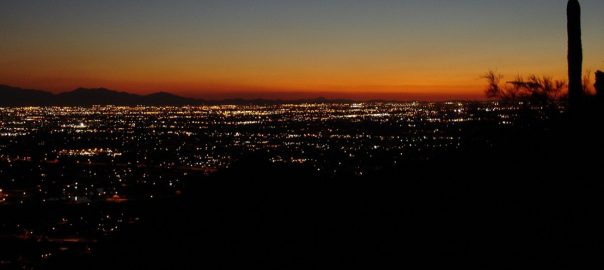
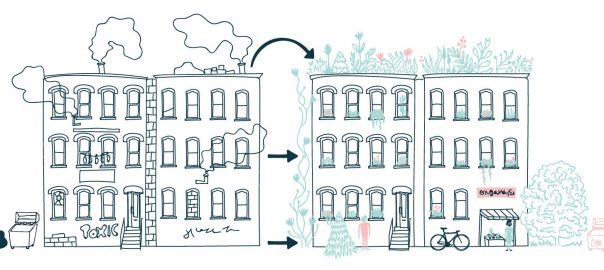

Leave a Reply